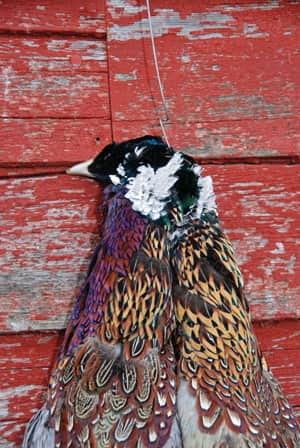Game Bird Gourmet Tip
Pheasants Forever 01.20.12

In the pre-industrial revolution (and pre-refrigeration) world, hanging game in a cool, dry place was about the only alternative to preserving fresh meat without smoking or salting it. Aging meat in this way also improved both the flavor and texture, breaking down tough, older game into tender cuts through what amounts to controlled decomposition. Game hung for long periods was said to have “high” flavor and was prized by certain culinaries.
Certainly I wouldn’t advocate hanging a pheasant by the head for so long it separates from the body, as reportedly was favored across the Pond, but I do think pheasants and other game birds benefit from aging, whether done by hanging or in a refrigerator. Either way, the keys are consistent temperature control and close monitoring.
There are many opinions on what temperature is ideal for aging game birds, but truthfully anything below 60 degrees (and above freezing, obviously) will work. Any hotter and you risk the growth of harmful bacteria. Obviously, the cooler the temperature, the slower the aging process, so ideally you should shoot for somewhere between the two extremes. At the lower end of the thermometer, pheasants should age for up to 10 days; closer to 50-55 degrees, age them no longer than 3-5 days.
A spare fridge set to 45-50 degrees is a great place to age birds, or set them in the back of the main fridge where they’ll be less apt to freak out the spouse or kids when they go for an afternoon snack. Outside, they can be hung — by the head or feet, it doesn’t matter — in an unheated porch, garage or, during cool weather, on the shady, north side of any outbuilding. Just be sure to hang them high enough that no dogs, cats or varmints can get to them. It’s also a good idea to wrap them in cheesecloth if any flies or insects have survived past the first few frosts.

